As endurance athletes, runners often hyper-focus on cardiovascular performance and ignore other aspects of health. It's only if there’s extra time that many runners might add in some strength training—but this one sided approach to fitness reduces the body’s ability to absorb impact while running. In neglecting strength training, runners are not likely to build the power-producing muscles needed for longevity. So, if you want to improve your running, start integrating strength and mobility work into your running routine.
If you don't know where to start, Team Injinji's Zac Marion has broken down some actionable first steps. As a Doctor of Physical Therapy, endurance runner, running coach, and Injinji toesock enthusiast, he's given us a simple but effective protocol to improve your foot health and lower body strength. Take it away, Zac!
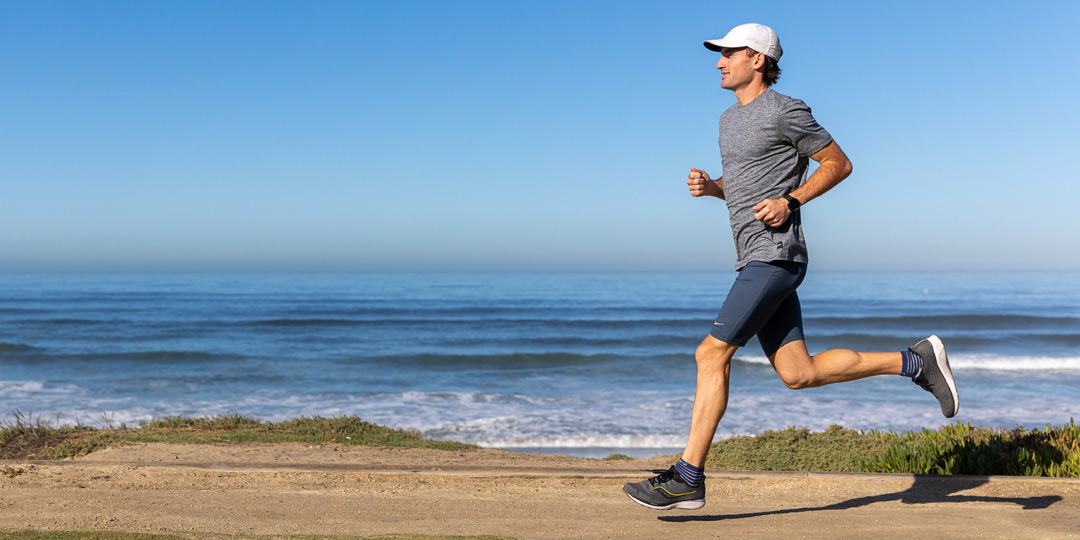

Foot health is incredibly important, as there are 28 bones, 33 joints, and over 100 tendons, ligaments, and muscles from the knee down that all culminate into the foot. Along with the foot itself, the calf muscles contribute the most power to forward propulsion and the achilles is the strongest, most resilient soft tissue in the body. Although the achilles can absorb impact that's 2-3 times your body weight, it remains the most injured ligament for runners.
To build lower body strength and muscular integrity, focus on the foot, ankle, and lower leg. It's okay to start small and work up to more advanced moves over time. I recommend that all my clients begin with the following protocol to improve their running.
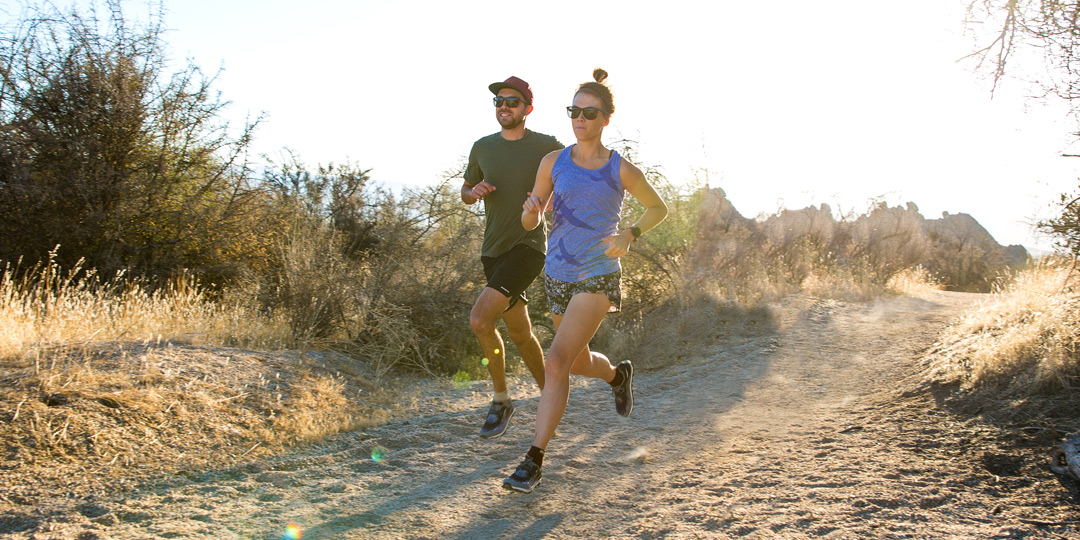
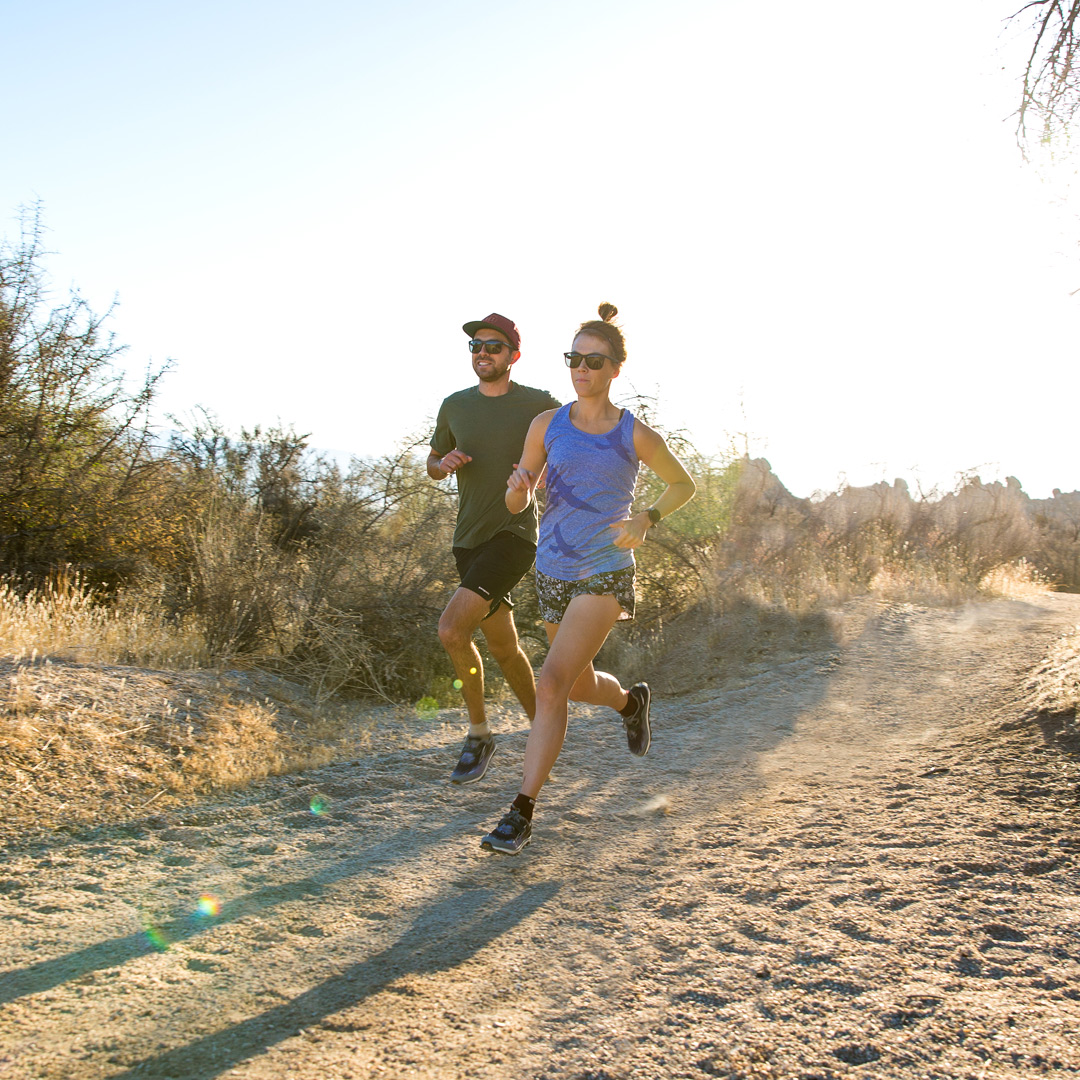
Foot Exercises
The foot is often overlooked. We don’t think about strengthening it like we do other parts of the body. However, the foot has to absorb forceful impact and power produced by our gait cycle. It's also the first and last point of contact between our bodies and the ground.
To put it in perspective, about one quarter of the body’s bones are housed in the feet alone, accompanied by over 30 joints. In order to run as efficiently as possible, the foot needs the ability to access every plane of motion in the human body.
Here are three exercises you can do to strengthen your feet.
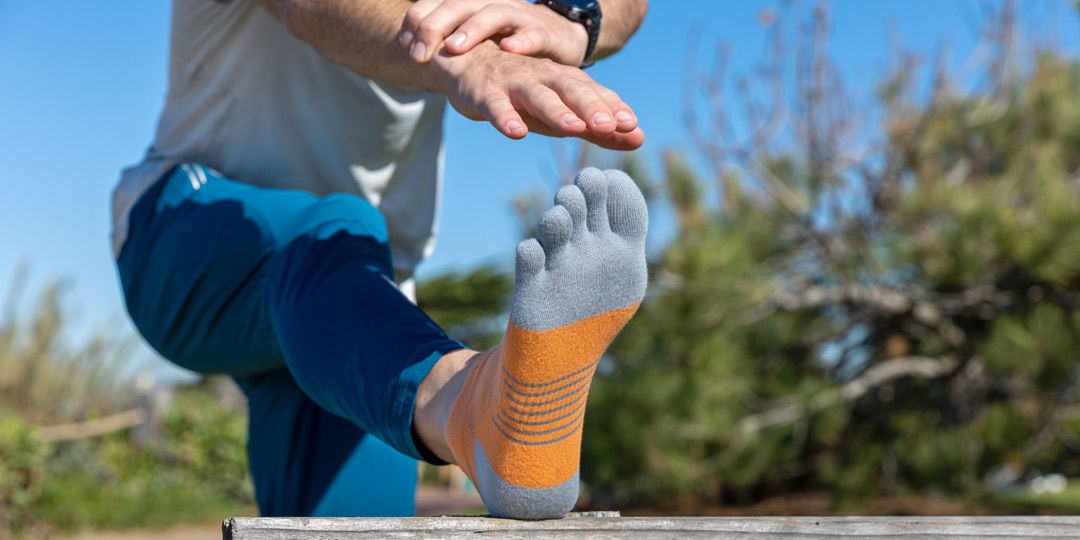
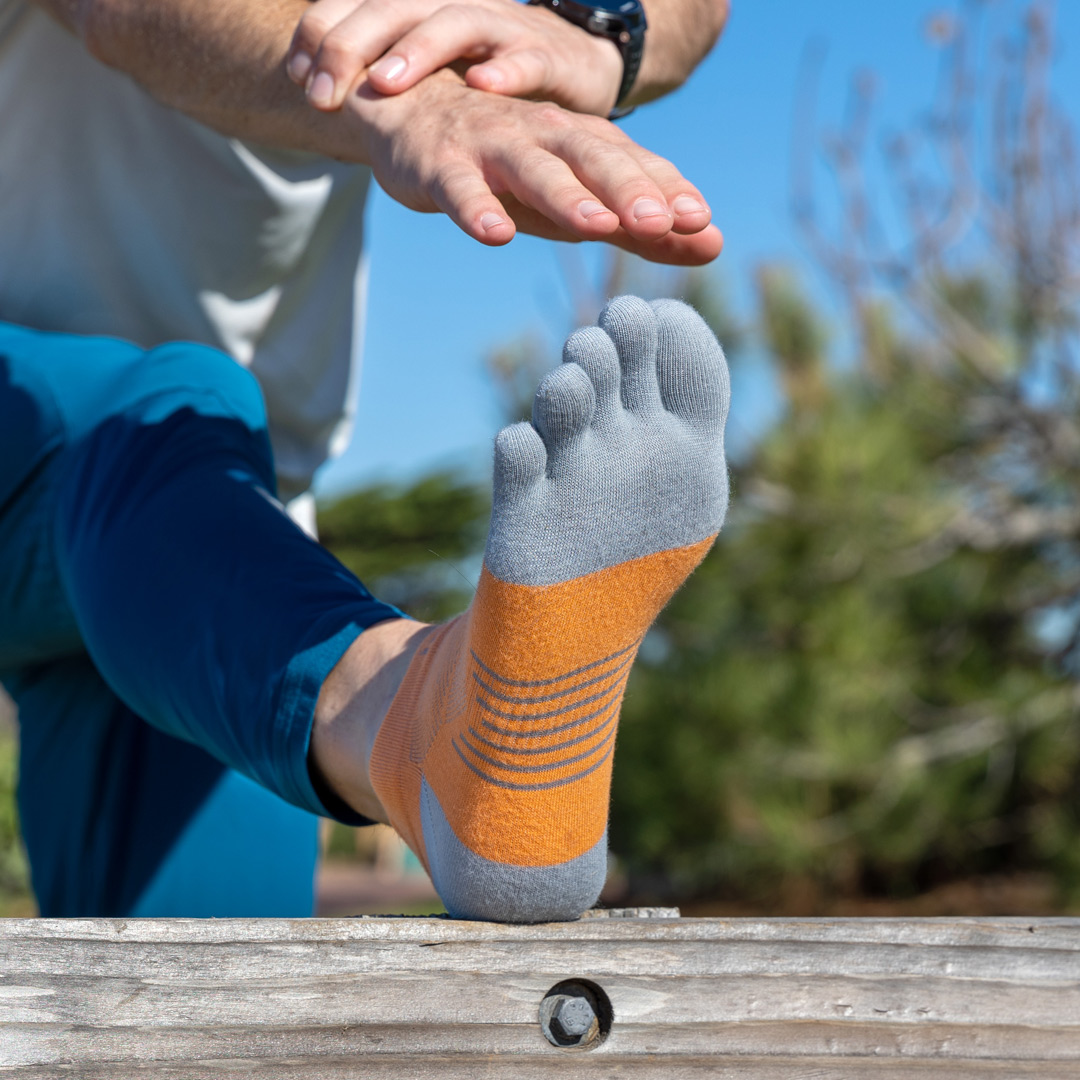
Towel Crunches
Place a towel flat on the ground and use your toes to scrunch it up. As with any exercise, towel scrunches have to be more deliberate than simply curling your toes. Keep your heel planted firmly against the ground, lift your toes, and extend them up and back. Then stretch them as far forward as possible and use the toes and arch to scrunch the towel.
Focus on deepening your arch when you curl your toes in, and make sure that you keep your heel still all throughout. This will challenge your intrinsic muscles to elongate, contract, and recruit strength with each scrunch. Start by performing these seated. Advance to standing when you’re ready.
Toe Yoga
This exercise is great for strengthening those intrinsic muscles of the foot, but with a little more distinction between muscles. We call this proprioception. The higher level of proprioception we have, the more efficiently our foot responds when it makes contact with the ground. In layman's terms, it helps keep us agile and snappy from the foot up.
Keeping your foot flat on the ground, lift your big toe up without moving your other four toes. You can also practice these inversely, by lifting your four smaller toes, keeping the big toe on the ground.
Toe yoga is a prime example of how foot core strengthening is a small yet essential habit for the longevity of your foots muscle structure. It doesn’t take much time, nor does it require a lot of physical exertion, so it’s perfect to do while sitting at your desk. This is another reason to wear Injinji toesocks at all times!
Big Toe Press
The big toe is one of the most important joints in the foot. It produces a significant amount of power. Subsequently, without proper big toe strength and stability, that power dissipates. This means that a strong big toe is integral in keeping the other joint structures performing optimally.
While standing tall with your feet flat, press your big toe into the ground while keeping the other four neutral. If done correctly, the arch will lift the other four toes in the air. Hold each press contraction for up to 10 seconds and repeat 10 times on each foot.
It may take a couple attempts until you feel strong and confident in this movement, so practice regularly.

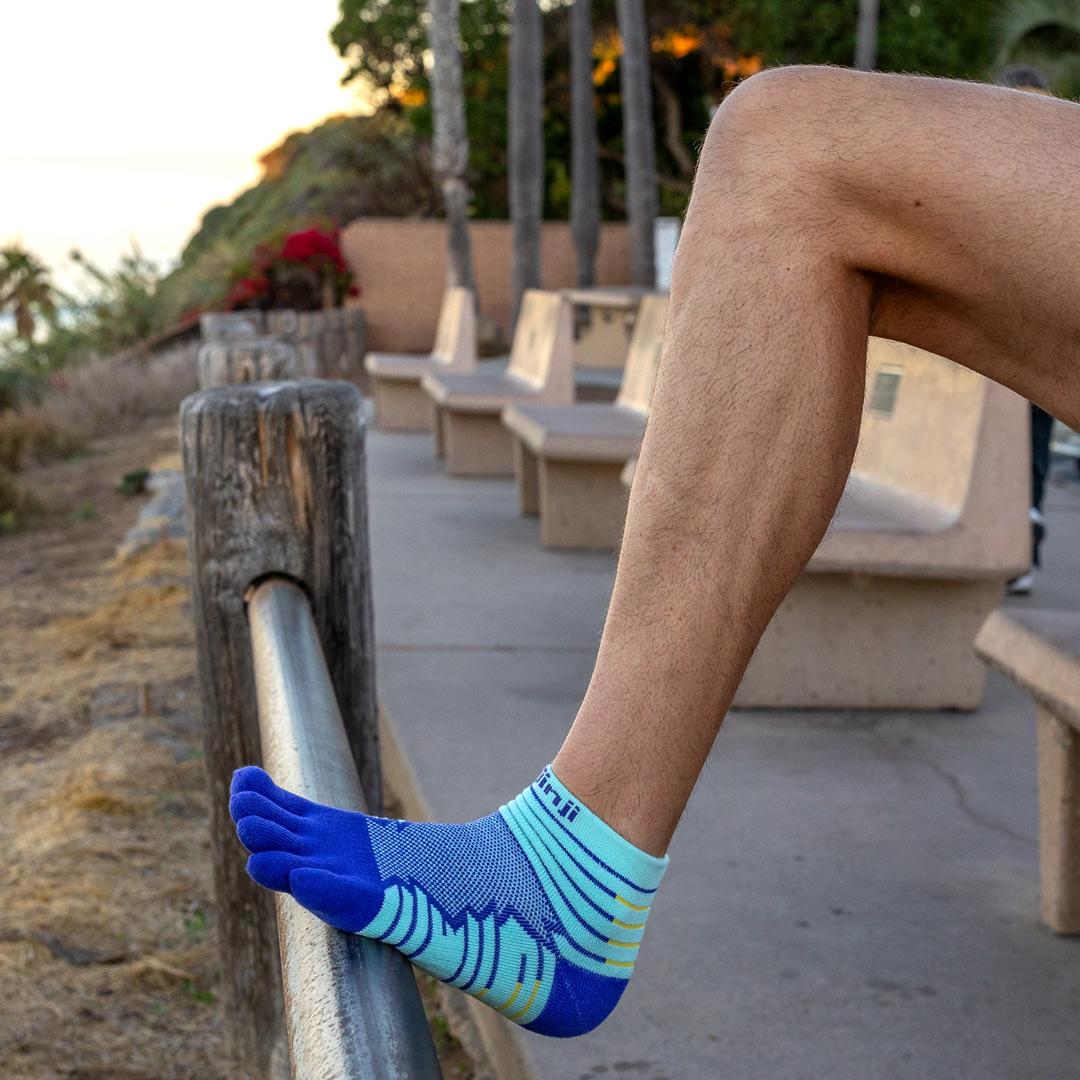
Ankle Exercises
The ankle joint is the intersection for all foot and lower limb muscle. It moves in all directions and needs strength to access each plane. This allows the ankle to adjust to the terrain and provide stability for the rest of the kinetic chain up to the hip. Any restriction here severely limits athletic performance and causes certain muscles to overperform and others to underperform ultimately leading to weakness, overuse injuries, and muscle strains.
Here are my favorite exercises for ankle joint health.
Dynamic Ankle Dorsiflexion
It's not uncommon for runners to lack dorsiflexion, causing compensation all the way up our kinetic chain. It’s also problematic for any athlete who runs uphill, as the strain put on our calf muscles dramatically increases.
While standing, step one foot up onto a chair or any other surface that places your lifted foot somewhere between your opposite knee and hip. Place your hands on your knee for stability and lean forward, with your knee moving over your toes, until you feel a nice stretch. Hold for a few seconds and rock in and out of the stretch, attempting to get a little deeper each few reps.
This can also be done in a half kneeling position, which requires a little more of a balance. For an advanced version, place your hands on the knee to guide the knee laterally and medially over the ankle to open up more mobility patterns.
Single Leg Balance
This is the base exercise for so many advanced movements. Balance and proprioception at the ankle is the key to effecient movement, but even more crucial in athletic pursuits.
Because running is really just a series of single leg hops, I like to challenge one leg at a time. By improving your balance, you are increasing the speed at which you respond to loading forces, thus reducing the risk of injury. Strengthening your stabilizing muscles increases your ability to run for longer distances.
While standing, raise one leg to thigh or hip height, parallel with the ground. Maintain this for up to 60 seconds and repeat 3 times before switching legs. To increase the challenge, stand on a soft surface, such as a couch cushion, pillow, or bosu ball. Once you master 3 reps of 60 seconds, begin again on a flat surface with your eyes closed and repeat until you are ready for a softer surface.
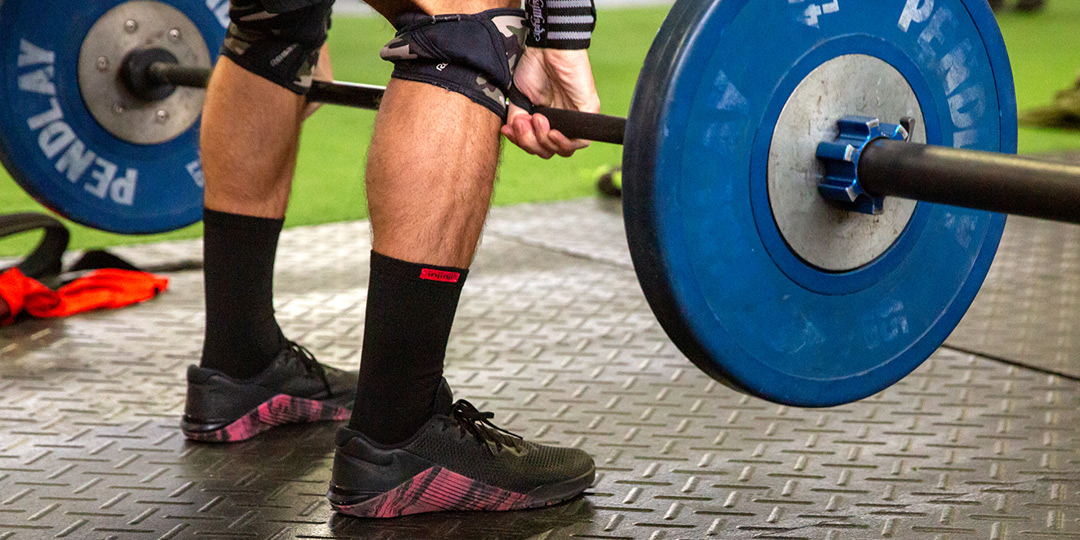

Lower Leg Exercises
The lower leg is essentially the powerhouse of the foot. Almost every muscle in the lower leg travels down through the ankle and controls the foot to some degree. These long muscles produce a lot of power. In fact, they product the most significant amount of power for endurance running. They also absorb 2-3 times your body weight in impact forces in every step! That’s why most runners have incredibly tight calf muscles and are prone to plantar fasciitis pain.
In order for legs to function properly, they need to be strong and resilient. Here are a couple movements to give them the love they deserve.
Penguin Walk
Shin splints are a thing of the past with this exercise! Throughout the gait cycle, particularly when lifting the foot and striking the ground, the anterior shin muscle is responsible for controlling the foot. It keeps us from slapping the ground too hard and raising our toes so we don’t trip. These muscles are constantly in use which explains why so many runners experience a shin splint type pain.
While standing, lean back on your heels and raise your toes into the air as high as possible. While maintaining this position, walk forward and backward 10 or so steps until you’ve reached fatigue, or about 1 minute. Repeat 3 times with about 30 seconds of rest in between. Seem easy? Then there’s no excuse to skip it!
Jump Rope
This one needs no introduction. Jump roping is great for foot strength, ankle mobility, calf muscle explosion, and reaction time. Shoot for 3 rounds of 1 minute each. The landing will help your body adjust to absorbing impact. It also requires balance and access to ankle proprioception, so not only do you get the physical adaptations, but it’s also a great cardio warm up!
Weighted Calf Raises
This exercise is the coup de grâce of the whole program. It combines all the aforementioned movements into one of the best lower limb exercises you can do. This helps treat and prevent achilles tendonitis, realigns fibers, and works out all sorts of adhesions in the soft tissues of the calves.
Recent research has proven that the soleus, a large muscle in the back of the shin, produces the highest output in endurance athletes. This is why a longer tempo run leaves your calves feeling tight or sore. This exercise effectively works the two major msucles in the back of the shin, the soleus and gastrocnemius.
On a flat surface, hold two dumbbells on each side, or a kettlebell to your chest. Slowly raise your heels off the ground until you're as far on your toes as possible. Hold for 1-2 seconds and slowly lower back down. The goal is to maintain this movement non stop for 5 minutes, but you can start with 1 minute increments. The focus is not on how many reps you can do, but moving to fatigue while maintaining balance and stability throughout. Readjust as needed to perform each repetition strongly and confidently.

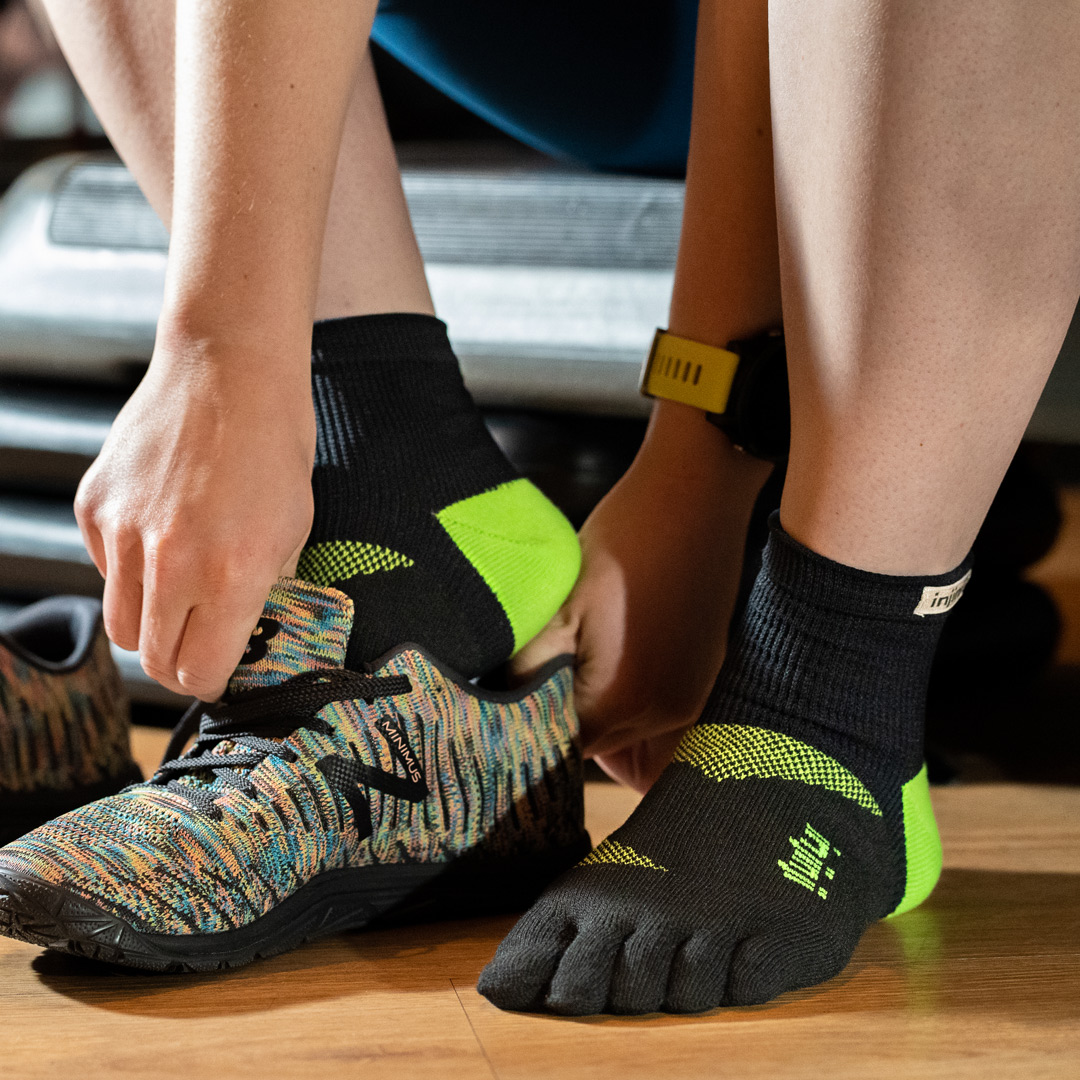
So there you go, athletes! These exercises will help you increase foot health and strengthen your lower limbs. If implemented, your performance will improve and you'll reduce the likelihood of injuries, allowing you to keep reaching those goals. This protocol makes a difference in my athlete’s careers, my own career, and I know it will make a difference in yours.
Happy trails!








